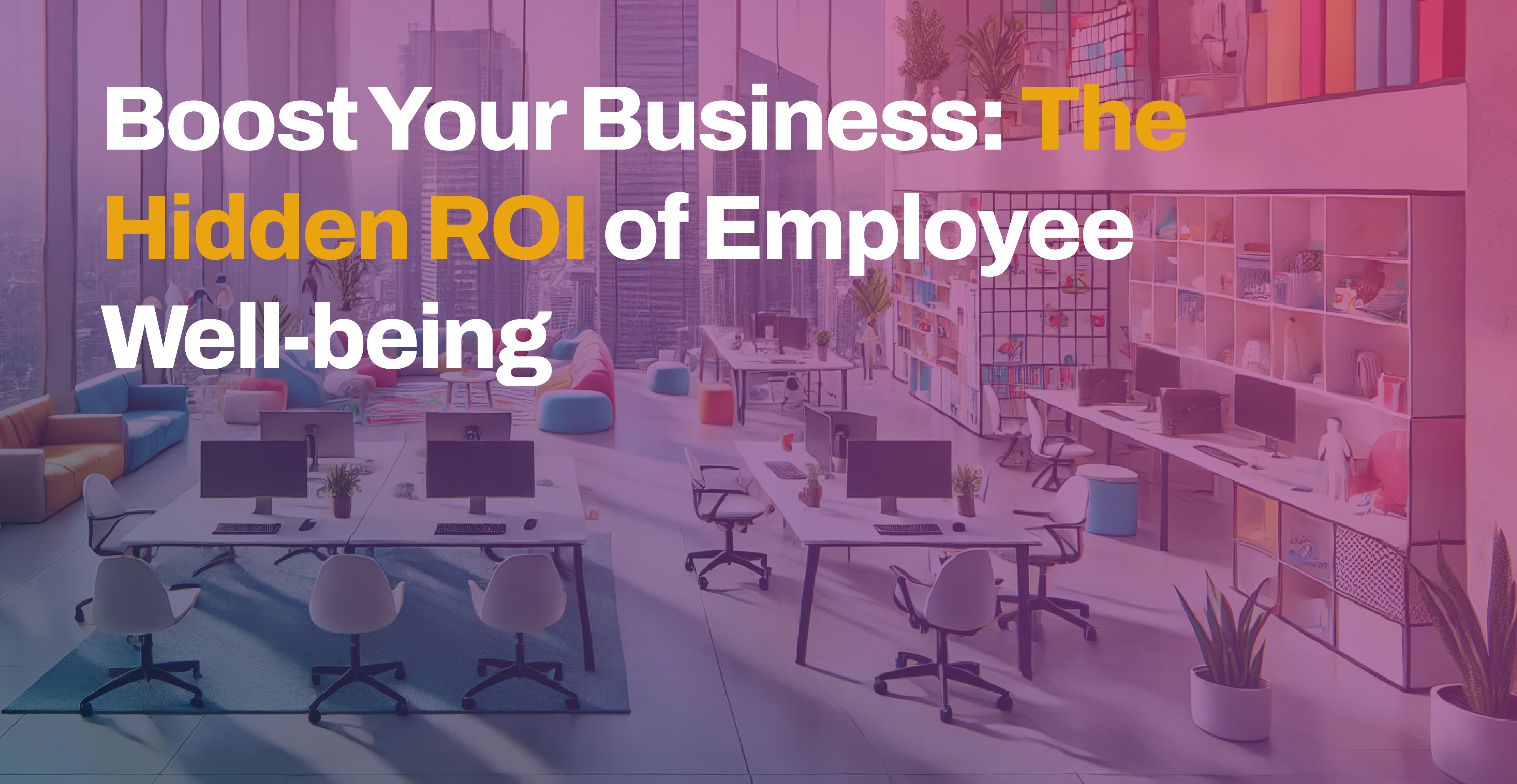Written by: COO Jason Fields
Imagine a typical workday. You have a dedicated team working hard to meet deadlines and achieve targets. Yet, something seems off. Some employees seem disengaged, others are frequently absent, and morale is low. As a leader, you wonder what could be causing this and how you might address it. This isn’t an uncommon scenario, and perhaps even more familiar with people adjusting to hybrid or fully remote work situations. It’s harder to gauge where team members stand when you see them a few times a week or only on video calls. Just as ensuring your physical health can lead to a more vibrant life, fostering a healthy work environment can dramatically enhance your organization’s performance.
Engaged employees: driving business forward
There is no shortage of stats that tell us caring about employee accommodations makes a difference. Consider the American Psychological Association (APA) findings: workplaces prioritizing employee well-being see significant improvements in overall performance, including higher productivity and lower turnover rates. Deloitte’s “Global Human Capital Trends” report further highlights that companies with highly engaged employees outperform their disengaged counterparts by 21% in profitability (McKinsey & Company) (Deloitte United States). These statistics paint a clear picture: caring for your employees is not just about being a good employer—it’s about driving your business forward.
HR is tasked with a lot, we get it
Senior HR and HR IT leaders often encounter numerous hurdles in implementing effective well-being programs. A survey by the International Labor Organization (ILO) found that the lack of accessible tools significantly hampers productivity and satisfaction among employees with disabilities. Furthermore, Gartner reports that 42% of organizations experience compatibility issues when integrating assistive technologies into existing systems (Deloitte United States) (McKinsey & Company). These challenges highlight the complexity of creating an inclusive and supportive work environment, yet they also underscore the importance of striving to overcome these barriers.

So why should you invest in employee accommodations?
The benefits are assorted:
Increased Productivity and Engagement:
The Job Accommodation Network (JAN) reports that providing proper accommodations can lead to a 60% increase in productivity. Engaged employees are not only more productive but also more likely to stay with the company, reducing turnover rates (Deloitte United States).
Reduced Absenteeism and Turnover:
According to the Society for Human Resource Management (SHRM), well-supported employees experience a 37% reduction in absenteeism. This reduction is crucial for maintaining a stable and reliable workforce (CIPD).
Enhanced Company Reputation and Employer Branding:
Companies known for supporting employee accommodations enjoy higher ratings on employer review sites like Glassdoor. This enhanced reputation can attract top talent and improve overall company morale (CIPD).
Legal Compliance:
The U.S. Equal Employment Opportunity Commission (EEOC) emphasizes the legal risks associated with failing to provide adequate accommodations. Non-compliance can lead to significant legal penalties and damage to the company’s reputation (CIPD).
The working world is digital, it’s time for tools that are up for the challenge
Technology plays a pivotal role in facilitating employee accommodations. A McKinsey report found that technology solutions can reduce the time spent on accommodation requests by 30% (McKinsey & Company). This is where Cephable comes in. Imagine having a single platform that integrates speech recognition, facial expressions, and head movements to create a seamless user experience. Cephable eliminates the need for multiple assistive tools, making it easier to manage and more cost-effective.
Research from Forrester indicates that consolidating assistive technologies into a single platform can reduce IT support costs by 25% (Deloitte United States) (McKinsey & Company). Cephable stands out by combining a variety of assistive inputs into a single easy-to-manage platform, which can save organizations up to 40% on assistive technology costs as point solutions can be replaced with a more robust platform that optimizes the features employees most regularly use.
What’s coming
The rise of remote work has increased the demand for digital accessibility tools, with a 50% growth in investment in these technologies since 2020. The World Economic Forum predicts that by 2030, companies prioritizing employee accommodations will have a significant competitive advantage in talent acquisition and retention (Deloitte United States) (McKinsey & Company).
Investing in employee well-being does more than build a healthy company culture; it’s a strategic move that can drive business success. By supporting your workforce, you can boost productivity, reduce turnover, and enhance your company’s reputation.
Ready to see the benefits of comprehensive employee support in action? Book a demo of Cephable today and discover how our integrated solution can transform your workplace.
Get In Touch
Our team can help you learn more about integrating with Cephable.

